#Cretaceous fossil shell
Explore tagged Tumblr posts
Photo

RARE: Paracymatoceras hillii Fossil Nautilus – Albian, Cretaceous – Texas, USA – Alice Purnell Collection – 100% Genuine with Certificate
Offered here is a rare and scientifically important fossil nautilus of the species Paracymatoceras hillii from the Albian stage of the Lower Cretaceous period, dated to approximately 113 to 100.5 million years ago. This exceptional specimen was found in Texas, USA, and comes from the renowned Alice Purnell Collection, known for its meticulously catalogued, museum-grade fossil specimens.
Paracymatoceras hillii represents a genus of extinct nautiloid cephalopods that closely resemble modern nautiluses in shell shape but differ in suture complexity and internal chamber arrangement. These marine animals used gas-filled chambers within their coiled shells to control buoyancy and likely fed on small marine organisms while drifting through warm Cretaceous seas.
This fossil specimen displays excellent preservation of the shell’s coiling, form, and suture lines, making it both a valuable research piece and a stunning display item.
Geological Context: The Albian Stage of the Lower Cretaceous was a time of widespread shallow seas across what is now North America. These seas supported an abundance of marine life, including ammonites, nautiloids, bivalves, and marine reptiles. Fossiliferous sites in Texas have long been prized for their richness and exceptional preservation of marine fauna. Specimens like this Paracymatoceras provide crucial insights into nautiloid diversity and palaeoecology during the Cretaceous.
Key Details:
Species: Paracymatoceras hillii (Fossil Nautilus)
Fossil Type: Extinct marine nautiloid cephalopod
Age: Albian Stage, Lower Cretaceous (~113–100.5 million years ago)
Location Found: Texas, USA
Provenance: From the Alice Purnell Collection
Condition: Excellent preservation with clear spiral form and original shell detail
Authenticity: 100% genuine fossil, supplied with a Certificate of Authenticity
Scale: See photo with 1cm rule square/cube for accurate sizing
Photo: The exact specimen shown is what you will receive
Scientific & Collector Value: Fossil nautiloids are significantly rarer than ammonites, and examples like Paracymatoceras hillii are especially valuable due to their scientific use in biostratigraphy and their visual similarity to modern-day nautiluses. This specimen’s association with the Alice Purnell Collection adds an extra layer of provenance and trust, making it highly desirable for collectors, educators, and researchers.
All of our Fossils are 100% Genuine Specimens & come with a Certificate of Authenticity.
Fast & Secure Shipping – Expertly packaged and promptly shipped for safe delivery.
Don’t miss the opportunity to own a rare and well-preserved Paracymatoceras hillii nautilus fossil from the Albian of Texas, USA—a true collector’s piece from the world-famous Alice Purnell Collection.
#Paracymatoceras hillii nautilus#fossil nautilus Texas#Cretaceous fossil shell#Albian marine fossil#Texas fossil cephalopod#rare nautilus fossil#certified fossil specimen#Alice Purnell Collection#real fossil mollusc#fossil marine invertebrate#nautiloid fossil Texas#collector fossil USA
0 notes
Text



7.3" Cretaceous Heteromorph Ammonite (Didymoceras) - South Dakota
#fav#cretaceous#heteromorph#heteromorph ammonite#ammonite#didymoceras#ammonoid#fossil#fossils#prehistoric#shell fossil#png#transparent#paleontology#paleoblr#paleo
87 notes
·
View notes
Text
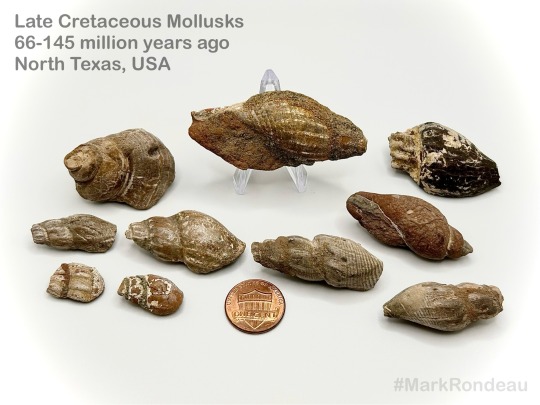
Fossilized mollusks from the Late Cretaceous (66-145 million years ago). Collected by Mark Rondeau in North Texas, U.S.A.
_
Link to photo on Pinterest: https://pin.it/79Pfyyz
_
_
#fossils #fossil #paleontology #nature #science #fossilhunting #prehistoric #LateCretaceous #fossilhunter #mollusk #fossiladdict #naturalhistory #paleontologist #cretaceous #extinct #evolution #fossilcollector #paleo #animals
#markrondeau#mark rondeau#rondeau#cretaceous#late cretaceous#fossil shells#texas fossils#fossils#fossil hunter#fossil hunting#fossil#paleontology#nature#science#prehistoric#fossil addict#evolution#north texas#fossilvintage#paleomedia#history#prehistory#ladonia#Ladonia fossil park#rockhound#rock hounding#rock hound#extinct animals
3 notes
·
View notes
Text

The distinctive pinhole eyes, leathery hood, and numerous tentacles of modern nautiluses were traditionally thought to represent the "primitive" ancestral state of early shelled cephalopods – but genetic studies have found that that nautiluses actually secondarily lost the genes for building lensed eyes, and their embryological development shows the initial formation of ten arm buds (similar to those of coeloids) with their hood appearing to be created via fusing some of the many tentacles that form later.
There's a Cretaceous nautilidan fossil that preserves soft tissue impressions of what appear to be pinhole eyes and possibly a remnant of a hood, so we know these modern-style nautilus features were well-established by the late Mesozoic. But for much more ancient Paleozoic members of the lineage… we can potentially get more speculative.
So, here's an example reconstructed with un-nautilus-like soft parts.
Solenochilus springeri was a nautilidan that lived during the Late Carboniferous, around 320 million years ago, in shallow tropical marine waters covering what is now Arkansas, USA.
Up to about 20cm in diameter, (~8"), its shell featured long sideways spines which may have served as a defense against predators – or possibly as a display feature since they only developed upon reaching maturity.
———
NixIllustration.com | Tumblr | Patreon
References:
Anthony, Franz. "500 million years of cephalopod fossils" Earth Archives, 19 Feb. 2018, https://eartharchives.org/articles/500-million-years-of-cephalopod-fossils/index.html
Klug, Christian, et al. "Preservation of nautilid soft parts inside and outside the conch interpreted as central nervous system, eyes, and renal concrements from the Lebanese Cenomanian." Swiss Journal of Palaeontology 140 (2021): 1-11. https://doi.org/10.1186/s13358-021-00229-9
Korn, Dieter, and Christian Klug. "Early Carboniferous coiled nautiloids from the Anti-Atlas (Morocco)." European Journal of Taxonomy 885 (2023): 156-194. https://doi.org/10.5852/ejt.2023.885.2199
Kröger, Björn, Jakob Vinther, and Dirk Fuchs. "Cephalopod origin and evolution: a congruent picture emerging from fossils, development and molecules: extant cephalopods are younger than previously realised and were under major selection to become agile, shell‐less predators." BioEssays 33.8 (2011): 602-613. https://doi.org/10.1002/bies.201100001
Mikesh, David L., and Brian F. Glenister. "Solenochilus Springeri (White & St. John, 1868) from the Pennsylvanian of Southern Iowa." Proceedings of the Iowa Academy of Science. Vol. 73. No. 1. 1966. https://scholarworks.uni.edu/pias/vol73/iss1/39/
Shchedukhin, A. Yu. "New Species of the Genus Acanthonautilus (Solenochilidae, Nautilida) from the Early Permian Shakhtau Reef (Cis-Urals)." Paleontological Journal 58.5 (2024): 506-515. https://www.researchgate.net/publication/384922837_New_Species_of_the_Genus_Acanthonautilus_Solenochilidae_Nautilida_from_the_Early_Permian_Shakhtau_Reef_Cis-Urals
Wikipedia contributors. “Nautilida” Wikipedia, 26 Nov. 2024, https://en.wikipedia.org/wiki/Nautilida
Wikipedia contributors. “Solenochilus” Wikipedia, 28 Apr. 2022, https://en.wikipedia.org/wiki/Solenochilus
#science illustration#paleontology#paleoart#palaeoblr#solenochilus#solenochilidae#nautilida#nautiloid#cephalopod#mollusc#invertebrate#art#doing the inverse of all those ammonite reconstructions that make them look like nautiluses
220 notes
·
View notes
Text
Round 3 - Mammalia - Monotremata




(Sources - 1, 2, 3, 4)
Our first and most ancient living order of mammals is Monotremata. There are five living species of monotreme: one Platypus (image 1) and four echidnas. These are the Short-beaked Echidna (Tachyglossus aculeatus) (gif below), Attenborough’s Long-beaked Echidna (Zaglossus attenboroughi) (image 4), the Western Long-beaked Echidna (Zaglossus bruijnii) (image 2), and the Eastern Long Beaked Echidna (Zaglossus bartoni) (image 3).
Monotremes have structural differences in their brains, jaws, digestive tract, reproductive tract, and other body parts, compared to many other mammals, though they are most often differentiated by the fact that they are the last remaining order of mammals to lay eggs. All living species lack teeth as adults, though platypuses have them as babies. All living species have spurs on their hind limbs, though they are vestigial in echidnas. In male platypuses they are attached to venom glands and contain venom powerful enough to kill predators as large as a dog. Monotremes have 400-40,000 electroreceptors on their snouts, depending on species, which they use to locate invertebrate prey buried beneath sediment. All living species of monotremes are indigenous to Australia and New Guinea, though Cretaceous species were also found in South America.
Monotremes possess five pairs of sex chromosomes and one of the X chromosomes resembles the Z chromosome of birds, suggesting that the two sex chromosomes of other mammals evolved after the split from the monotreme lineage. Like reptiles, monotremes have a cloaca, which is a single opening for both reproduction and waste removal. However, urine is excreted through the cloaca while semen passes through the male monotreme’s penis. The monotreme penis is similar to that of turtles and is covered by a preputial sac. Monotreme eggs are soft-shelled and leathery. They are retained for some time within the mother and receive nutrients directly from her, generally hatching within ten days after being laid. Newly hatched monotremes are called “puggles,” and are fetus-like, with relatively well-developed forelimbs that enable them to crawl around. Female monotremes do have mammary glands and nurse their young with milk, though they lack teats. Instead, mother monotremes lactate via pores in their skin, “sweating” out the milk. All five living species show prolonged parental care of their young, with low rates of reproduction and relatively long life-spans.
Monotremes arose in the Early Cretaceous. Some of the oldest known platypus-like fossils are Steropodon and Dharragarra of the Late Cretaceous. Our living platypus is also known from Pliocene fossils.
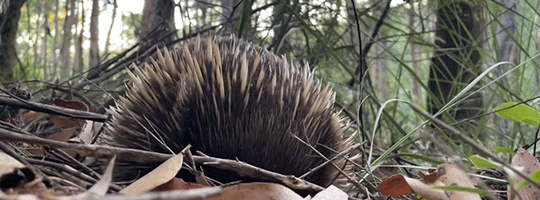
Propaganda under the cut:
Monotremes maintain a lower average temperature than most mammals, conserving energy by "switching off" their temperature regulation and going dormant in cold weather.
The tongues of long-beaked echidnas (genus Zaglossus) have sharp, tiny spines that help them capture their termite, ant, and worm prey. Since they have no teeth, they break down their food by grinding it between the bottoms of their mouths and their tongues.
Monotreme milk contains a highly expressed antibacterial protein not found in other mammals.
Monotremes are the only mammals (apart from the Guiana Dolphin [Sotalia guianensis]) known to have a sense of electroreception, and the Platypus's electroreception is the most sensitive of any monotreme.
In the American animated series Phineas and Ferb, the title characters own a pet bluish-green Platypus named Perry who, unknown to them, is a secret agent. Coincidentally, and unbeknownst to show creator Dan Povenmire at the time, real platypuses biofluoresce a similar cyan colour when seen under ultraviolet lighting!
The longest recorded lifespan for an echidna in human care was 50 years, with anecdotal accounts of wild individuals reaching 45 years.
Venom production rises among male Platypuses during the breeding season, and it may be used to assert dominance.
I’m really sorry about more penis talk but we’re all adults here I hope. So… male echidnas have a four-headed penis, covered in penile spines. During mating, the heads on one side "shut down" and do not grow in size; the other two are used to release semen into the female's two-branched reproductive tract. Each time it copulates, it alternates heads in sets of two. When not in use, the penis is retracted inside a preputial sac in the cloaca. During mating season, a female may be followed by a line or "train" of up to ten males, the youngest trailing last, with some males switching between lines.
In 1799, the first scientists to examine a preserved Platypus body deemed it a hoax made of several animals sewn together.
Echidnas are very timid. When frightened, they attempt to partially bury themselves and curl into a ball similar to a hedgehog. Strong front arms allow echidnas to dig in and hold fast against a predator pulling them from the hole.
The rarest species of monotreme is the critically endangered Attenborough's Long-beaked Echidna (Zaglossus attenboroughi). It had only been seen once in 1961 in the Cyclops Mountains of the Indonesian province of Papua. It was thought to be extinct until some of its "nose pokes" (holes from the echidna’s nose poked into the ground as it searches for earthworms) were found in the mountains during an expedition in 2007. Finally, in November 2023, the first video footage of a living individual was recorded (image 4).
The Platypus holds special meaning as a totem animal for the Watiwati people, who live along the Murray River.
#SORRY I FORGOT TO EDIT THE POLL TO SAY MONOTREMATA INSTEAD OF X AND I CAN’T CHANGE IT NOW 😭#idk how I missed that ;_;#Mammalia#animal polls#Round 3
135 notes
·
View notes
Photo

🦖 Description des mollusques fossiles qui se trouvent dans les grès verts des environs de Genève /. Genève: impr. de Jules-Guillaume Fick, 1847-1853.. Original source Image description: Illustration plate showing detailed black-and-white drawings of 30 fossilized Cretaceous mollusk shells from the genus Solarium. The shells vary in shape, including tightly coiled spirals, conical forms, and partial cross-sections, revealing intricate surface textures such as ridges, grooves, and dotted patterns. The specimens are labeled numerically and alphabetically (e.g., 1a, 4c), with sections displaying broken or cut views to expose internal shell structures. The image is from a 19th-century scientific publication documenting mollusks found in green sandstones near Geneva. The detailed depictions aid in the identification and comparison of extinct species from this geological period.
54 notes
·
View notes
Text

Didymoceras nebrascense - an unusual ammonite from the Late Cretaceous, ~70 million years ago, found in the seas of North America. It was one of heteromorph ammonites, known for their odd shells that formed a variety of strange and complex shapes. The spiral shell of Didymoceras, like other heteromorphs, impacted its locomotion, causing it to drift slowly with ocean currents. During that it likely used its tentacles to catch small prey, while the unusual shell shape might have helped against predators.
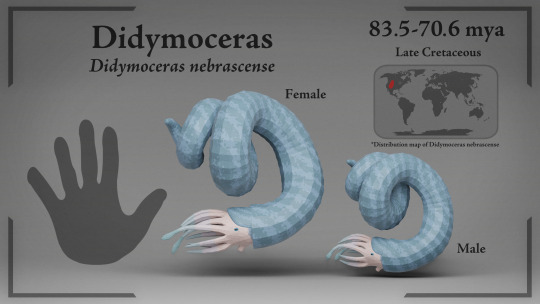
Fossil evidence suggests sexual dimorphism, with females larger than males. This size difference was likely linked to reproductive roles, as females needed more space to store eggs and additional protection, a trait common in other ammonites.

224 notes
·
View notes
Text
Most animals and plants never fossilize. For those that do, it's usually only hard parts such as bones and shells that preserve. However, in some exceptional cases, soft tissues such as muscles and gills survive the fossilization process and can present a wealth of information about the biology and ecology of ancient organisms. In a paper recently published in Palaeontologia Electronica, Dr. Adiel Klompmaker, University of Alabama Museums' curator of paleontology, and colleagues reported on a remarkable crab with multiple mineralized soft tissues preserved. This crab lived 75 million years ago during the Cretaceous in the area of present-day South Dakota in an ancient sea known as the Western Interior Seaway.
Continue Reading.
403 notes
·
View notes
Text
Eocene gators and Miocene gharials
It's been a busy two-ish weeks for me once again with two "new" crocodilians dropping not even a week apart. These two newcommers couldn't be any more different, as you'll see soon enough.
The first of the two is not exactly a stranger, in more than one way. Sutekhsuchus dowsoni in truth has been known since 1920, when it was described as Tomistoma dowsoni based on fossils from Wadi Moghra in Egypt. Tomistoma being one of those genera that was a popular wastebasket for crocs. Broad snout and overbite? Alligator. Narrow snout? Tomistoma. Everything else? Crocodylus.
Tomistoma is still heavily affected by that, with the paper still referencing about half a dozen species of Tomistoma that are almost definitely not Tomistoma. In that regard, tho its not super new its fantastic to see that one of these Miocene circum-mediterranean forms finally gets its due (especially after having been unceremoniously been lumped into T. lusitanica for a while). Additional fun fact, the original "missinterpretation" as a species of Tomistoma is used as the basis for the new name, basically meaning "Set's crocodile" in reference to Sutekh/Set being god of deception.
Left: Sutekhsuchus by @paleomiguel Right: Sutekhsuchus by @manusuchus Go give them a follow


Another way in which Sutekhsuchus is not "new new" is that, intentional or not, the name was actually dropped a month ago without many people noticing. As has been pointed out to me by @paleomiguel, a recent paper on Eogavialis featured a phylogeny that contained Sutekhsuchus, a name I was not familiar with. However, the species name did ring a bell and after a brief search on google scholar I did find a reference to the then unpublished redescription.
Anyways, background aside Sutekhsuchus has some cool stuff going for it. Its anatomy is in some regards intermediate between the modern false gharial (which the paper regards as one of the basalmost gavialoids) and the Indian gharial (a highly derived weirdo). Ultimately, its just one of several species that lived around the broader Tethys Sea during the Miocene as part of a flourishing croc ecosystem. Given the warmer temperatures, it was in pretty good company. We know it from Gebel Zelten and Wadi Moghra, both of which preserve the bones of the robust Rimasuchus and the bizarre Euthecodon, both members of the Osteolaemines ("dwarf crocodiles", a name that makes more sense when you ignore these fossil forms). Both localities are interpreted as being somewhat coastal, consisting of lagoons, estuaries, slow moving rivers and surrounding forests.
Left: Rimasuchus attacking Zygolophodon by Michael Tripoli Right: Euthecodon arambourgi by yours truly


The other new crocodilian was much more of a surprise to me personally. Ahdeskatanka russlanddeutsche is a species of basal alligatorine from the Eocene of North Dakota. The genus name derives from the Dakota word for alligator, the species name references ethnic Germans that settled the region after emmigrating from the Russian Empire.
Ahdeskatanka via Cossette & Tarailo

It lived during the early Eocene in the Golden Valley Formation of North Dakota and in many regards resembles many early alligators of the time, having been small with a short and blunt snout and globular teeth well suited for crushing hard shelled prey.
During this time period North Dakota experienced the Early Eocene Climatic Optimum, an exceptional warm period that saw lush subtropical to tropical forests grow along the banks of meandering rivers and extensive swamps. Not great for mammalian carnivores but fantastic for crocodilians, of which there were plenty. The Golden Valley was home to at least 4. In addition to Ahdeskatanka there was a similar, possibly closely related unnamed form, a large crocodyloid similar to the ubiquitous Borealosuchus and the large caiman Chrysochampsa, a relic of a Cretaceous offshoot of the family.
Left: Borealosuchus by Wayne Hsieh Right: Chrysochampsa via Cossette & Tarailo


As always, here the respective Wikipedia pages and relevant publications
Sutekhsuchus: https://en.m.wikipedia.org/wiki/Sutekhsuchus https://www.tandfonline.com/doi/full/10.1080/14772019.2024.2384548
Ahdeskatanka: https://en.m.wikipedia.org/wiki/Ahdeskatanka https://www.tandfonline.com/doi/full/10.1080/02724634.2024.2403579
#Sutekhsuchus#Ahdesktatanka#Tomistoma dowsoni#Wadi moghra#Gebel zelten#Golden valley formation#Prehistory#eocene#Miocene#croc#crocodilia#Alligatoridae#Gavialidae#Palaeoblr#paleontology#prehistory#cenozoic
95 notes
·
View notes
Text
Fossil Friday: Archelon
Apparently, there is a sea turtle protection society in Greece by this name which is cool but I a here to talk about the ACTUAL sea turtle called Archelon ischyros. Archelon lived in the Late Cretaceous Period about 80-74 Ma. At the time, the American Midwest was overed by the Western Interior Seaway.
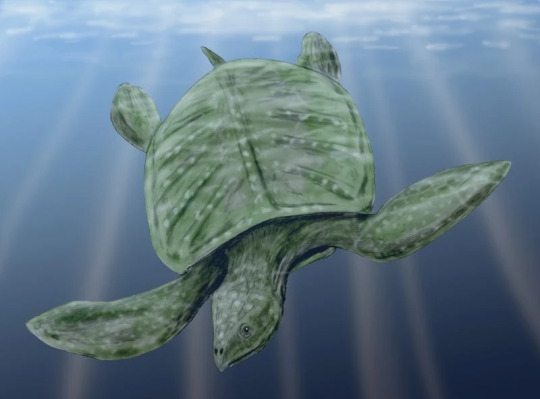
It was discovered by American paleontologist George Reber Wieland in 1895 in the Pierre Shale, a rock formation made of mostly, well, you guessed it, shale. Shales accumulate at depth in ocean basins.
Archelon lived alongside the mosasaur Platycarpus,

sharks,

(Squalus)
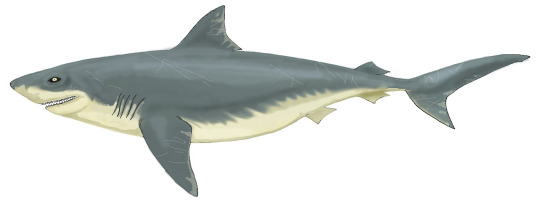
(Squalicorax)
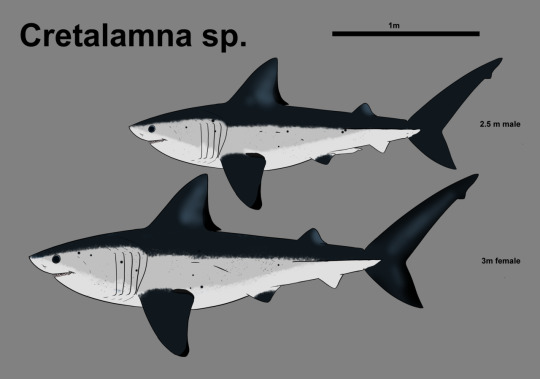
predatory ray-finned fish, Xiphactinus,
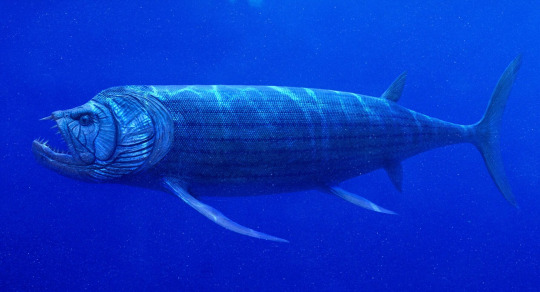
and an array of ammonites.
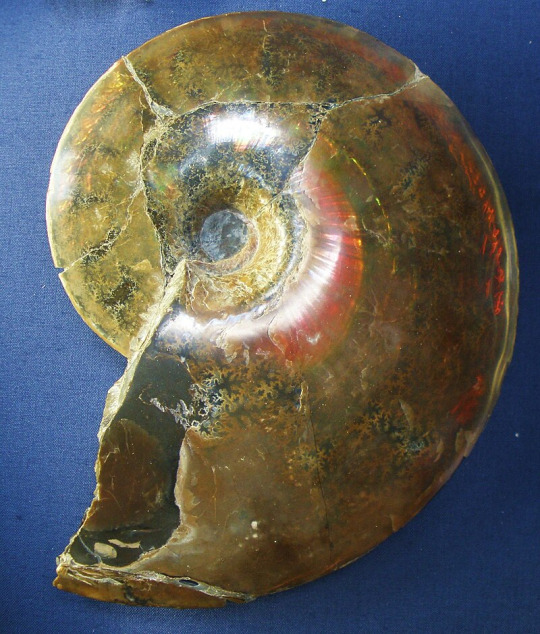
(Planticeras)

(Scaphites)
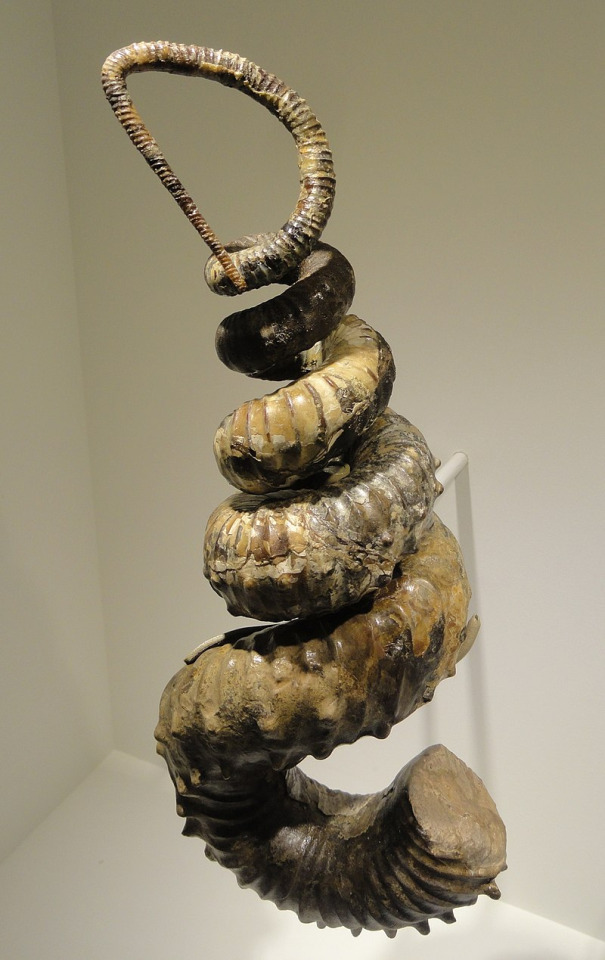
(Didymoceras)
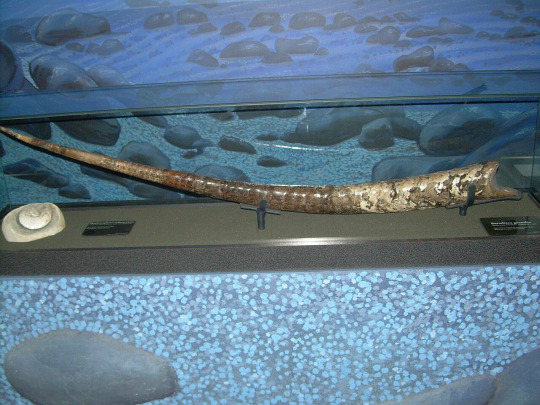
(Baculites)
Turtle phylogeny has been hotly contested for a long while thanks to their very strange morphologies (lacking extra openings in the skull, ribs and vertebrae expanding to create a shell). As of right now, most studies put them somewhere between lepidosaurs (lizards and snakes) and archosaurs (crocs and birds). It's debatable which they are closer to.
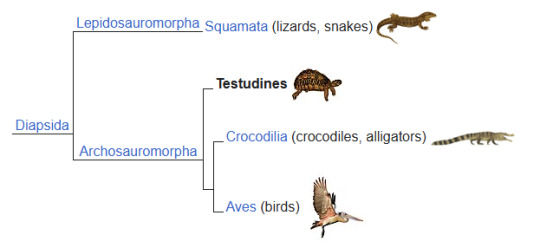
Either way, Archelon falls solidly into testudines, specifically in the clade protostegidae. This clade is completely extinct but their closest living relatives are living sea turtles.
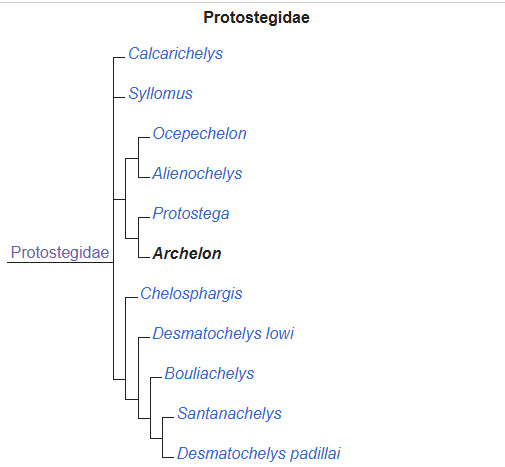
Archelon was the largest turtle to have lived at 11.5 ft long (352 cm). The largest specimen named Brigitta reached 15 ft (4.6m) in length. It had a pronounced hooked beak like a bird of prey indicating it was an obligate carnivore (must eat meat).

It's weak front flippers are similar to cheloniids (a group of living marine turtles) and indicate it probably preferred calm shallow waters to the deep sea. (Then again, it may be more like the Leatherback Sea Turtle than we realize and was a moderately good swimmer that could chase prey in the open ocean).
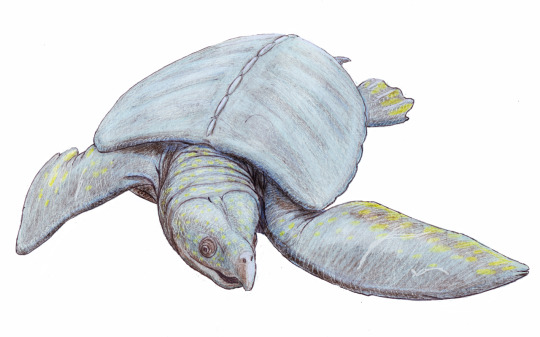
Overall, Archelon is a pretty cool animal. Have a good weekend and tune in Monday for another shiny metal. Fossilize you later!
#paleontology#fossils#fun facts#geology#science#science education#march madness#turtles#archelon#sea turtles#fossilfriday
27 notes
·
View notes
Photo

RARE Cleoniceras kirkaldyi Ammonite Fossil | Cretaceous | Isle of Wight UK | Certified | Alice Purnell Collection
This listing features a RARE Cleoniceras kirkaldyi fossil ammonite, a striking and finely preserved specimen from the Cretaceous Period, discovered on the Isle of Wight, United Kingdom. This ammonite is part of the esteemed Alice Purnell Collection, known for its premium fossil selection.
Geological Context:
Fossil Type: Ammonite (extinct marine cephalopod)
Species: Cleoniceras kirkaldyi
Geological Period: Lower Cretaceous (Aptian Stage, approx. 125–113 million years ago)
Formation: Likely part of the Lower Greensand Group or Wealden Group associated with Isle of Wight strata
Location: Isle of Wight, UK
Depositional Environment: Marine shelf environment; warm shallow seas promoting excellent fossil preservation in calcareous sediments
Scientific Classification:
Order: Ammonitida
Superfamily: Desmoceratoidea
Family: Desmoceratidae
Morphology & Notable Features:
Cleoniceras kirkaldyi exhibits a highly involute shell, smooth inner whorls, and characteristic ribbing across the flanks.
The shell is typically compressed and moderately evolute, with strong ornamentation in mature specimens.
This particular fossil shows exquisite detail in its preservation, capturing the fine suture lines and natural curvature of the species.
Palaeontological Significance:
An excellent representative of Lower Cretaceous ammonites from the UK, Cleoniceras species are often used for biostratigraphic correlation within Aptian biozones.
Named and described formally by W.S. Kirkaldy, an authority on mid-Cretaceous cephalopods.
All of our Fossils are 100% Genuine Specimens & come with a Certificate of Authenticity.
Scale cube = 1cm: Full sizing please see photo. The Fossil is a carefully chosen piece, with a photo that shows the actual specimen you will receive. Sourced from the Alice Purnell Collection.
#Cleoniceras kirkaldyi#Cretaceous ammonite#Isle of Wight fossil#certified ammonite#Alice Purnell fossil#rare UK ammonite#fossilised cephalopod#ammonite Cleoniceras#fossil shell#Desmoceratidae#genuine ammonite#ammonite fossil UK
0 notes
Text
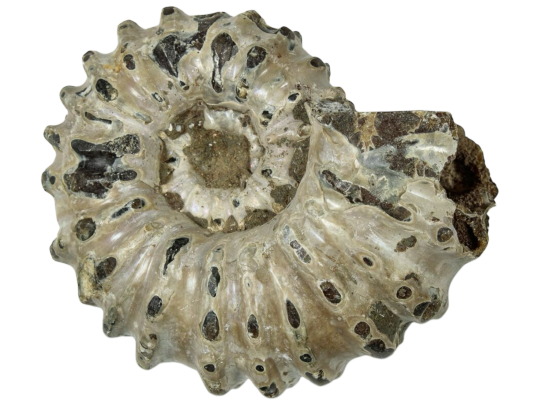
2.1" Bumpy Ammonite (Douvilleiceras) Fossil - Madagascar
#cretaceous#ammonite#bumpy ammonite#fossil shell#douvilleiceras#madagascar#png#transparent#paleontology#prehistoric#paleoblr
57 notes
·
View notes
Text
https://fb.watch/p27QCAPUEp/?mibextid=fNONU
#North Sulphur River#NSR#Ladonia#fossils#fossil#late cretaceous#Cretaceous#cretaceous period#rondeau#markrondeau#mark rondeau#Texas Fossils#Texas Fossil Hunting#fossil hunting#fossil hunter#fossil shells
0 notes
Text

Fossil Friday: Ammonite
Ammonite is a preserved shell belonging to an Ammolite or other creature belonging to the subclass Ammonoidea. These fossils are the remains of an extinct marine cephalopod (mollusc) from the Jurassic period (about 200 million years ago) to the late Cretaceous period (about 66 million years ago). Ammonites died off at roughly the same time as flightless dinosaurs. Ammonites were a unique group of creatures, likely having eight separate arms, resembling a coleoid (squids, octopuses, and cuttlefish), while the shell and it's shape closer resembling a nautilus. An estimated 10-20 thousand species of ammonite have been discovered, so no two fossils will be the same. The largest ammonite specimen found was over 1.8 metres (approx. 5.9 feet) in length, while being an incomplete fossil. Ammonite can be found at any location where prehistoric oceans once were. Ammonite is often used as an index fossil, being used to date the approximate age of the rocks it is embedded in. Ammonite is considered to be one of the world's rarest gemstones when the shell appears iridescent.
It is crucial to be aware of laws and regulations governing fossil collection in your area. Many places require all fossils found to be sent to a palaeontologist, and have strict regulations on the selling of locally found specimens.
More information about ammonites can be found here.
Stay tuned for next week's Fossil Friday!
#crystals#geology#minerals#rocks#fossils#rock collection#gemstone#geoscience#rock hounding#rock of the day#paleo#palaeontology#paleontology#fossil friday by let's talk rocks#fossil friday#let's talk rocks#ammonite
12 notes
·
View notes
Text
Round 2 - Arthropoda - Thecostraca




(Sources - 1, 2, 3, 4)
Thecostraca is is a class of crustaceans, many of which have planktonic larvae which become sessile or parasitic as adults. The most well-known group are the Barnacles (subclass Cirripedia), but Thecostraca also includes the parasitic Ascothoracida, and the mysterious Facetotecta.
Facetotecta, comprising only the genus Hansenocaris, are known only from their larvae (image 3) and adults have yet to be recognized, though some scientists believe they may actually be larval tantulocaridans.
Ascothoracidans are parasites of echinoderms and cnidarians. Most genera are meso and endoparasitic (living inside the host) while some are ectoparasitic (living on the outside of the host). They are similar in anatomy to copepods, with six pairs of legs, an abdomen with four segments, a telson, and a bivalved carapace. They feed on their host via piercing and sucking mouthparts, and some more advanced species also absorb nutrients through the carapace. They are sexually dimorphic, in many cases so much so that the smaller males will live inside the larger female’s mantle cavity.
Barnacles (subclass Cirripedia) are more well-known than other Thecostracans. Adult barnacles are sessile filter feeders, except for the infraclass Rhizocephala, which are parasites of other crustaceans. Barnacles attach themselves to a surface as adults, be that a rock, the shell of a mollusc, a ship, or a large animal such as a whale. They come in two common forms: acorn barnacles which grow their shells directly on a surface (image 4) and goose barnacles which attach themselves via a stalk (image 1). Barnacles have a carapace made of six calcareous plates, with a lid made of four more plates. They attach themselves to the substrate by means of a cement gland at the base of their antennae. Eight pairs of thoracic limbs, called cirri, extend from the carapace to filter plankton from the water and bring it towards the mouth. The hairs on these limbs are very sensitive to touch, and help the barnacle sense the world around them. They also have three simple eyes (ocelli) which can sense changes in light, allowing them to close their plates quickly if a shadow is detected.
Thecostracans have nauplius larvae, characterised by a head with antennules, antennae, mandables, and a single eye, three pairs of limbs, a carapace, and a telson. Barnacle larvae are brooded by the parent until their first moult, after which they are released to swim freely using setae.
The oldest known thecostracan fossil is dated from the Middle Cambrian. Traces of the parasitic forms have been dated from the Cretaceous.

Propaganda under the cut:
Barnacles have the longest penis (relative to body size) of any living animal. You can see it in action in the above gif and in this video.
Most barnacles are not parasitic (other than hitching a ride) and usually do no harm to the large animals they attach to. An overload of barnacles tends to be a symptom of an underlying issue, such as the animal being unable to shed its skin. Non-professionals scraping or pulling barnacles off of whales and turtles often does more harm than good for the affected animal!
12th-18th Century Europeans thought that Brants and Barnacle Geese emerged, fully formed, from Goose Barnacles. Gerald of Wales claimed to have seen the birds hanging down from pieces of timber, William Turner accepted the theory, and John Gerard claimed to have seen the birds emerging from their shells. In County Kerry, until relatively recently, Catholics abstaining from meat during Lent could still eat this bird because it was considered a fish.
As filter-feeders, barnacles play an important role in the ecosystem: not only for transferring nutrients up the food chain, but also for keeping the water clean.
When a barnacle chooses its home, it produces a biological glue made of six different proteins. While the glue hardens, it accumulates limestone salts, turning into a concrete-like shell. Barnacle glue is six times stronger than any manmade glue. Scientists are trying to replicate this glue for use in the fields of engineering, construction and medicine, where it can be used as a biological sealant during or post-surgery.
#i could add SO MUCH more but I am trying to make these descriptions shorter both for your sake and for mine#looking forward to narrowing these down to smaller groups in later rounds where I won’t have to write So Dang Much#anyway crabs are coming in the next one#round 2#animal polls#arthropoda#thecostraca
37 notes
·
View notes
Photo

🦖 Description des mollusques fossiles qui se trouvent dans les grès verts des environs de Genève /. Genève: impr. de Jules-Guillaume Fick, 1847-1853.. Original source Image description: Historical illustration depicting various fossilized mollusk shells from the Cretaceous period near Geneva. The image features detailed, black-and-white lithographic drawings of multiple bivalve species, including Astarte gurgitis, Crassatella Saxoneti, C. Sabaudiana, C. Fisiana, Cardita Constantii, and C. rotundata. Each shell is shown from different angles, highlighting distinct shapes, ridges, grooves, and hinge structures. The shells vary in form from rounded to elongated, with textured surfaces illustrating fine striations and anatomical features relevant to paleontological classification. The plate is labeled "Pl. 33" and includes scale bars for size reference.
25 notes
·
View notes